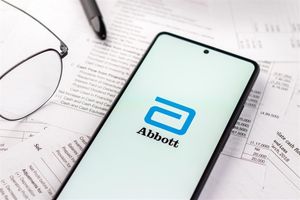Financial News
How to Build an Emergency Fund
NEW YORK CITY, NY / ACCESS Newswire / July 18, 2025 / Many people put aside cash reserves to prepare themselves for financial surprises. However, saving as much as half a year's worth of living expenses can be overwhelming, especially for anyone who's juggling bills, paying off debt, and saving for other goals.
That's why it's important to remember that building an emergency fund takes time, and any progress toward the goal is valuable. This guide breaks the process into manageable steps to help people plan for unexpected expenses.
Set a Realistic Target
Most experts recommend setting aside three to six months of living expenses for emergencies. This amount helps cover essential costs after a job loss or pay unexpected bills, like a car repair or emergency room visit.
Understandably, aiming for three months of living expenses can seem so discouraging that some people might quit before they get started. For those who need a bit more motivation, a mini-fund may be a better option.
A mini-fund starts with a small goal - perhaps $500 or one month's living expenses. Money saved toward this goal goes directly into a savings account. Once the first savings target is met, the individual can continue building until the full emergency fund is in place.
Choose a Savings Account
An emergency fund should be kept in a safe, interest-bearing savings account that's easily accessible but not linked to everyday spending. The goal is to ensure funds are available without penalty in an emergency while minimizing the temptation to use them in non-urgent situations.
A high-yield savings account (HYSA) can be a good option for an emergency fund because it typically pays more interest than a traditional savings account and doesn't usually penalize withdrawals. While HYSAs are often offered as online savings accounts, many traditional banks also provide them.
Some people keep their emergency funds in a checking account, but this isn't ideal - even if the account pays interest. Checks and debit cards make it too easy to spend money earmarked for emergencies.
Decide How Much to Save
The amount of money that should go into an emergency fund depends on each individual's financial situation. One popular approach for getting a handle on that is the 50/30/20 method.1 This method helps individual's divide their monthly gross (after-tax income) into three categories:
Needs (50%) like housing costs, food, and utilities.
Wants (30%) such as entertainment and travel.
Savings (20%) which can include an emergency fund, retirement savings, and debt payments.
Saving 20% may not seem like much to dedicate to savings, but the key is consistent contributions. Small amounts - even $25 each month - can make a difference over time.
Automate savings
The final step is to automate savings to make progress easier and more consistent. Many banks offer ways to do this, including:
Split direct deposit. Employers that offer direct deposit often allow employees to send portions of each paycheck to multiple accounts.
Recurring transfers. An account holder can usually schedule an automatic transfer of funds from their checking to their savings account on a weekly, biweekly, or monthly basis.
Automatic transfer programs. These programs move a small amount from checking to savings with each purchase or bill payment.
Automating savings removes decision-making and minimizes the temptation to spend savings on non-emergencies.
Small Steps, Lasing Impact
Building an emergency fund is a journey, not a race. Each small step can bring people closer to creating a reliable safety net that ensures they're prepared for whatever financial surprises come their way.
Sources
1 https://www.nerdwallet.com/article/finance/nerdwallet-budget-calculator
CONTACT:
Sonakshi Murze
Manager
sonakshi.murze@iquanti.com
SOURCE: iQuanti
View the original press release on ACCESS Newswire
More News
View More





Quotes delayed at least 20 minutes.
By accessing this page, you agree to the following
Privacy Policy and Terms Of Service.



